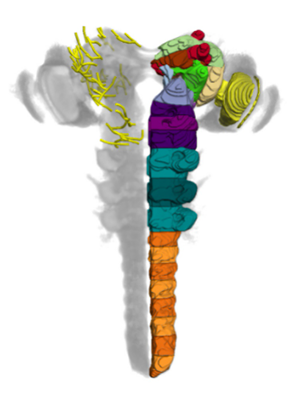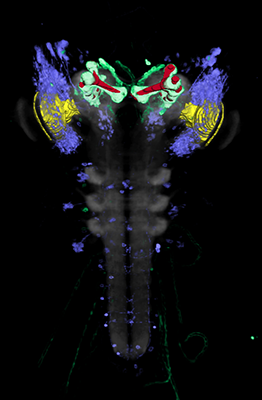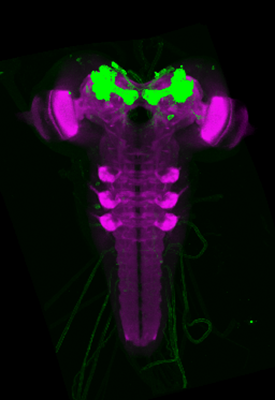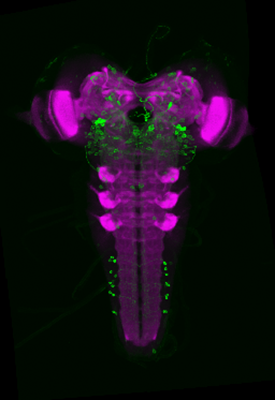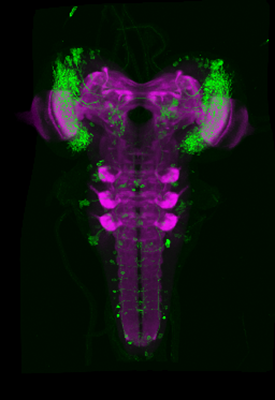A standard atlas for the larval brain as a tool for mapping neurogenetic tools.
Project
How does the brain organise behaviour based on sensory input, motivation or acquired experience?This question has occupied brain researchers from many disciplines for centuries. Although it has been possible to assign certain aspects of behaviour to defined areas of the brain, it is interesting to note that these results are difficult to translate into models. As a result, there is still no simple, generally accepted model for the functioning of the brain. The problem that usually arises here is that the exact circuit diagram and the networking of the brain consisting of many thousands of neurones is not known.
Approach
In this project, we have generated a standard atlas that allows existing genetic tools to be registered. This means that these and the cells labelled in them can be displayed in 3D in a complete larval brain and searched for using queries.
Aim
The aim of this work is to reconstruct the Drosophila brain during its larval development in its entirety neuroanatomically and simultaneously map thousands of neurogenetic tools (GAL4, LexA, Split-GAL4, ...) that allow to genetically and functionally manipulate every single cell in the larval brain. This is an important step towards a long-term understanding of how the simple larval brain functions and thereby recognising basic neuronal principles that may be transferred to larger cellular brains in the next step.
Publications
larvalign: Aligning Gene Expression Patterns from the Larval Brain of Drosophila melanogaster
Muenzing SEA, Strauch M, Truman JW, Bühler K, Thum AS, Merhof D.
Neuroinformatics. 2018 Jan;16(1):65-80.
DOI: 10.1007/s12021-017-9349-6
